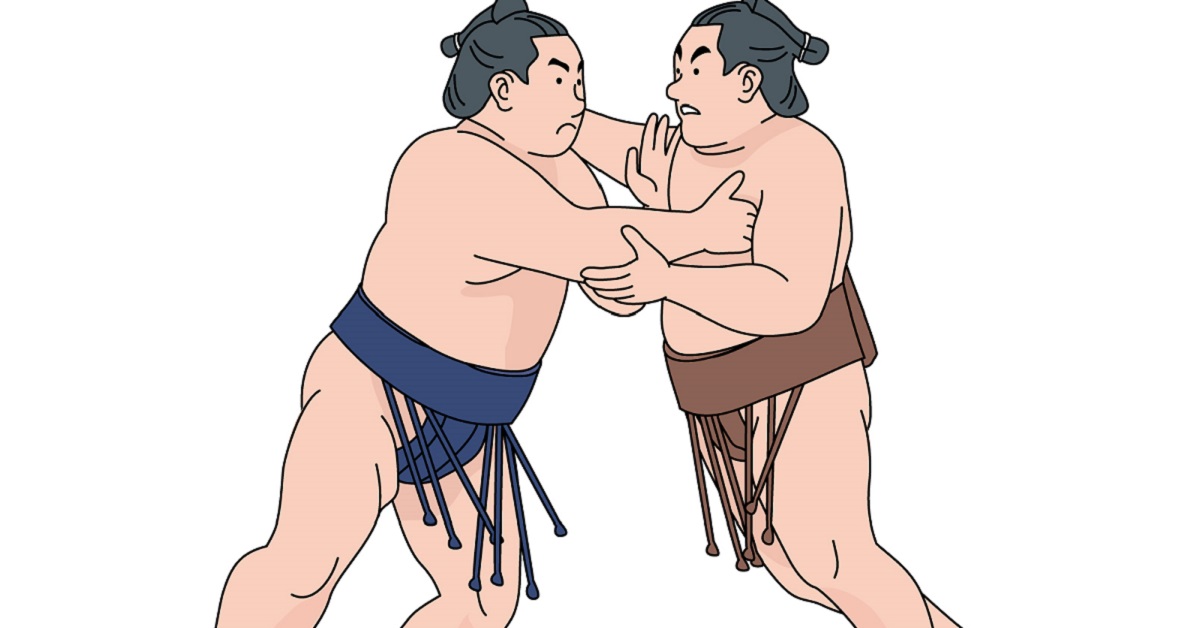In sumo wrestling, you may sometimes see the judges step into the ring after a bout ends. This process, called Mono-ii, is a formal consultation held when there is doubt about the referee’s decision. It is one of the most dramatic and unique aspects of sumo, ensuring that every match is decided fairly, not by one person’s judgment alone but through collective agreement.
What is Mono-ii?
Mono-ii is a procedure in which judges consult after a match when there is doubt about the referee’s decision. Around the dohyo sit five judges who carefully watch the bout. If even one of them feels uncertain about the referee’s call, they step into the ring to initiate consultation. Importantly, Mono-ii is not meant to criticize or blame the referee. Referees make instant decisions from extremely close range, where mistakes are always possible. The judges provide perspectives from different angles and discuss details such as whether a hand or foot touched the ground first, or whether a wrestler stepped out. Through this process, the final ruling is made by the judges’ collective decision, ensuring fairness and protecting the integrity of sumo.
Typical Situations That Trigger Mono-ii
There are several common cases where Mono-ii occurs. For example, when both wrestlers appear to go out at the same time, or when it is difficult to judge which body part touched the ground first.
| Case | Example | Note |
|---|---|---|
| Simultaneous fall | Both wrestlers step out at the same time | Even video review may not always resolve it |
| Possible wrong call | Referee’s decision seems incorrect | One of the most tense moments for spectators |
| Subtle contact | Heel or fingertips appear just barely inside or outside | Often checked with high-speed video |
| Falling order | Which part of the body touched first | The most frequent type of Mono-ii |
The Role of the Judges
While referees declare winners, the final authority rests with the judges. Five judges sit on the four sides and the front, carefully observing every move. During Mono-ii, their opinions are shared and a consensus or majority decision is reached. The referee’s decision serves as the first call, but the judges have the final say. This balance ensures fairness while respecting the referee’s role.
The Process and Types of Decisions
When Mono-ii is called, judges gather in the center of the dohyo to consult. The possible outcomes are:
| Decision Type | Meaning | Result |
|---|---|---|
| Gunbai-dōri (Decision upheld) | Referee’s ruling is confirmed correct | The original call stands |
| Gunbai-sashichigae (Reversal) | Referee’s ruling judged incorrect | Winner and loser are reversed |
| Torinaoshi (Rematch) | Too close to call, or both fell at the same time | Wrestlers fight again |
| Simultaneous rematch | Both clearly lost at the same moment | Immediate redo |
These decisions are always announced to the audience, making it easier for newcomers to follow.
The Cultural Meaning of Mono-ii
Mono-ii is not just about resolving disputes. It reflects Japanese cultural values of fairness and consensus. Judges gather, share observations, and reach a conclusion that best preserves fairness. This shows that sumo is not only a sport but also a cultural tradition rooted in collective judgment. For spectators, Mono-ii heightens the drama, turning an ordinary match into a gripping moment.
Video Review in Modern Times
In the past, all decisions relied solely on human eyes. However, modern sumo has adopted video review technology, improving accuracy.
| Era | Method | Feature |
|---|---|---|
| Past | Visual judgment only | Occasional miscalls led to controversy |
| Late Showa | Still photographs | Used as supplemental evidence |
| Heisei | Full video review introduced | Marked a leap in fairness |
| Present | High-speed multi-angle cameras | Almost every bout reviewed if needed |
Video review allows officials to check even the smallest details — like whether a fingertip brushed the clay before a foot stepped out — while still preserving the tradition of human judgment first, technology second.
Historical Background of Mono-ii
The formal system of Mono-ii was established in the Meiji period. Before that, a referee’s ruling was considered absolute, even if incorrect. Over time, public dissatisfaction with questionable calls grew, leading to the adoption of a review system. With television and internet broadcasting now making every detail visible to millions, the importance of Mono-ii has only increased.
Why It Appeals to Beginners and International Fans
For newcomers, Mono-ii may look complicated. In fact, it is very simple: “When a call is unclear, the judges meet to confirm.” This makes sumo more accessible for international fans, who are often used to similar systems in other sports such as video challenges in tennis or football’s VAR. The fact that no bout ends in ambiguity — that fairness is ensured through discussion and possible rematches — is something many sports fans worldwide appreciate.
Conclusion
Mono-ii is an essential system that guarantees fairness in sumo. Five judges, along with the referee, review disputed calls and decide whether to uphold, reverse, or redo a match. The process reflects Japan’s cultural respect for fairness and consensus, while modern video technology has made decisions even more accurate. For beginners and international audiences, understanding Mono-ii turns a moment of apparent interruption into one of the most dramatic highlights of sumo.





コメント